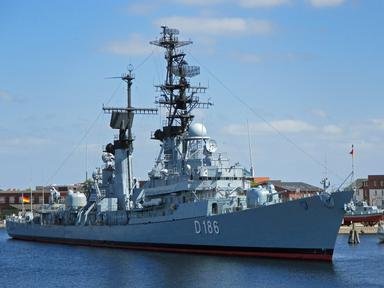Quiz Answer Key and Fun Facts
1. At the start of WW1, Germany had almost 30 U-Boats and quickly put them to good use. Which of these was first ship in the conflict credited with being sunk by a torpedo strike?
2. In 1915, the German submarine U-20 carried out an attack that, some claim, hastened the entry of the neutral USA into WW1 by sinking a passenger liner. Which of these was she?
3. As allied losses to U-Boats mounted in WW1, various new defensive measures were introduced. Among these was the practice of arming merchant ships, but concealing the guns. The theory was that since - at least early in the war - U-Boats had to surface to use their guns or torpedo tubes, the ships could fire back to sink the submarines. What were such covert armed ships called?
4. In the early stages of WW1, the range of German and Austrian U-Boats was limited, but by 1916 vessels of a longer range had been developed. Which of these was the first to complete a cross-Atlantic voyage from Germany to the USA?
5. The German U-Boat fleet fought desperately on their country's behalf during WW1, but some of their tactics caused revulsion and were seen as being against the 'rules of war'. One such incident was the sinking of the Llandovery Castle in 1918. What type of ship was she?
6. By which name was the principal U-Boat campaign of WW2 known to the allies?
7. The Second World War was only a matter of days old when the first recorded outrage at sea took place. On September 3, 1939, a U-Boat torpedoed and sank a passenger ship north of Ireland. What was her name?
8. In WW1, German U-Boats tended to operate alone. In WW2, as allied defences became more effective, they began to operate in groups. What were these groups called?
9. In WW2, approximately how many allied ships were sunk by German U-Boats?
10. At the end of WW2, where did the bulk of the German navy's Atlantic U-Boat fleet sail to make their surrender?
11. German U-Boats almost brought Britain to her knees in WW2 through the sinking of huge numbers of ships, but the sinking of just one U-Boat was to prove pivotal in the battle for the seas. What did the British recover from the U-559?
12. When they first saw service, U-Boats had a limited range, but that was gradually extended. In WW2, U-Boats were able to reach American waters. In April 1942, U-85 was sunk off the coast of the USA. Where, exactly?
13. Necessity, they say, is the mother of invention, and sonar played a crucial role for the allies in combating the German U-Boat menace of WW2. True or false, sonar was invented by scientists at the Massachusetts Institute of Technology.
14. Many U-Boats were sunk at sea by the allies and others were scuttled at the end of the war. One sub captured by the Allies in 1944 went on to be put on display in a science museum. Where was that?
15. In WW2, U-Boats operated extensively in the North Atlantic, but in which group of islands far from home were they also based?
Source: Author
darksplash
This quiz was reviewed by FunTrivia editor
stedman before going online.
Any errors found in FunTrivia content are routinely corrected through our feedback system.

